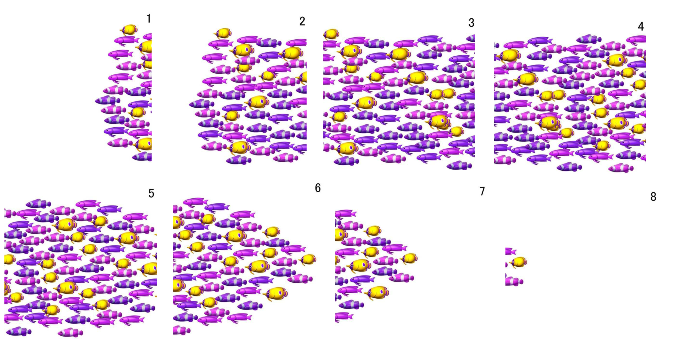February 12, 2016
Trademark News
JPO Grants Registration to New Types of Trademarks for the First Time
In October 2015, the Japan Patent Office (JPO) issued the first series of decisions to allow registration of new types of trademarks based on the amendment to the Trademark Act that took effect on April 1, 2015, which newly introduced trademarks consisting of sounds, colors, holograms, motions and positions.
On October 27, 2015, the JPO announced that it issued the first series of decisions to allow registration of the so-called "new types of trademarks." (Please see here.)
Based on the amendment, Japan now recognizes that sounds, colors, holograms, motions or positions can be registered as trademarks, in addition to traditional trademarks such as words and logos. 481 applications for the new types of trademarks were filed on April 1, the day on which the amendment took effect. Among them, approximately 10% were allowed for registration this time.
Specifically, the JPO decided in favor of registrability for 43 applications, which consists of:
(A) 21 sound marks out of 151 applications;
(B) 16 motion marks out of 32 applications;
(C) 5 position marks out of 103 applications; and
(D) 1 hologram marks out of 3 applications.
(E) No color per se marks out of 192 applications were allowed for registration in the first series of decisions.
It took over 6 months from filing for the JPO to issue a decision to allow these new types of trademarks for registration. This is a little longer than examination of traditional trademarks, which is usually allowed for registration in about 3 to 6 months from filing.
Sound Marks
The sound marks that were allowed for registration include voices speaking recognized words in Japanese, such as reading or singing traditional trademarks. Although the sound marks are depicted by staff notations in most cases, this is not always necessary. A properly-prepared sample of the sound or other kind of attachment could be necessary for filing purposes. Sound marks may be registered with hard media MP3 recording. Meanwhile, descriptions by sonograms or tablature musical scores are not registrable under the current JPO Examination Guidelines. Applications for sound marks that consist of a lion's roaring or of human shouts and the like are still under examination. Regarding such sound marks, it might be necessary to prove secondary meaning to satisfy the distinctiveness requirement.

Example of sound mark allowed for registration
(App. No. 2015-29806)
Motion Marks
Most of the motion marks that were allowed for registration depict movements or transformations of traditional trademarks such as words and logos. Such motion marks could be around 10 seconds long.
In the meantime, there are some motion marks that do not contain traditional trademarks but were nevertheless allowed for registration, such as short animation movies that demonstrate specific effects of medicine or a large group of fish traveling from one side to another (shown below). However, such motion marks were no longer than around 5 seconds. It is likely that the JPO considered the motion marks that are longer than 5 seconds and do not contain any traditional trademarks are potentially lacking inherent distinctiveness.

Example of motion mark allowed for registration
(App. No. 2015-30559)
Position Marks, Hologram Marks and Color Per Se Marks
It seems that position marks, hologram marks and color per se marks faced a high hurdle, since only a few position marks and hologram marks were allowed for registration and no color per se marks were allowed for registration. It is likely that further showing of secondary meaning would be necessary for such marks to be registered in most cases. The JPO indicated that other applications that were not allowed for registration this time are still under examination.
Conclusion
On the whole, it can be said that the JPO is willing to protect trademarks that do not necessarily contain traditional trademarks, and is willing to expand trademark protection to new types of trademarks. As of October 23, 2015, in total 1,039 applications for the new types of trademarks were filed with the JPO.
(Written by Ms. Mizue Kakiuchi (Attorney at Law, Patent Attorney))